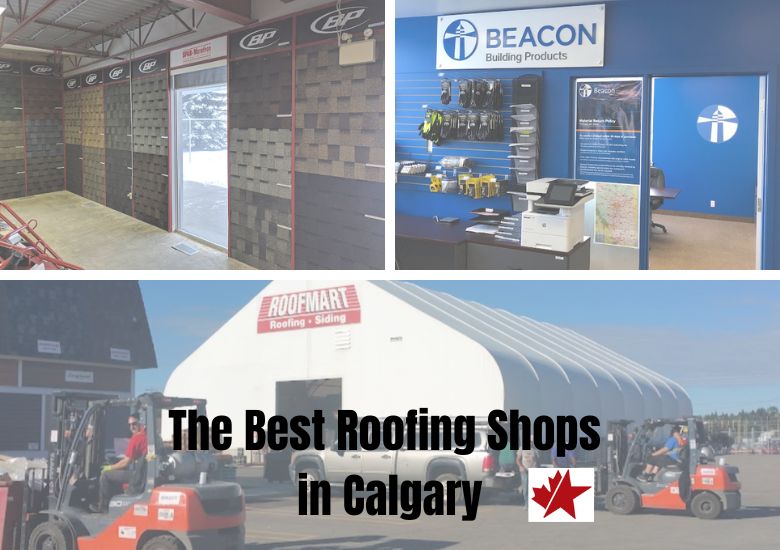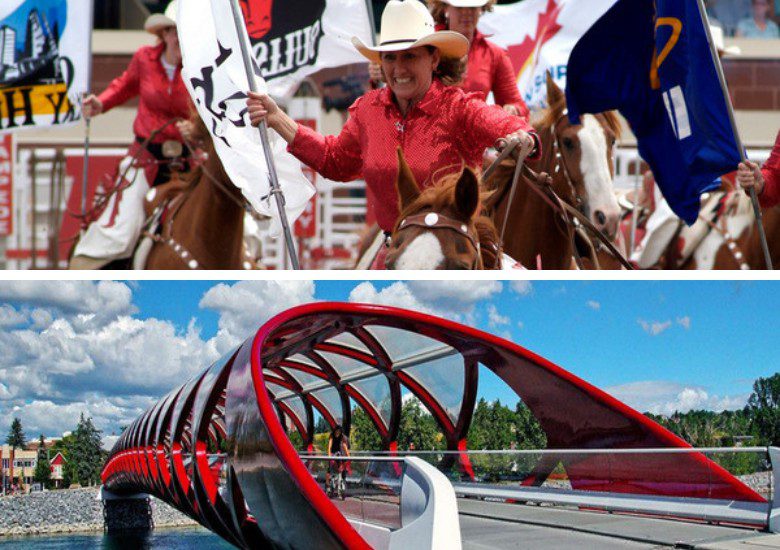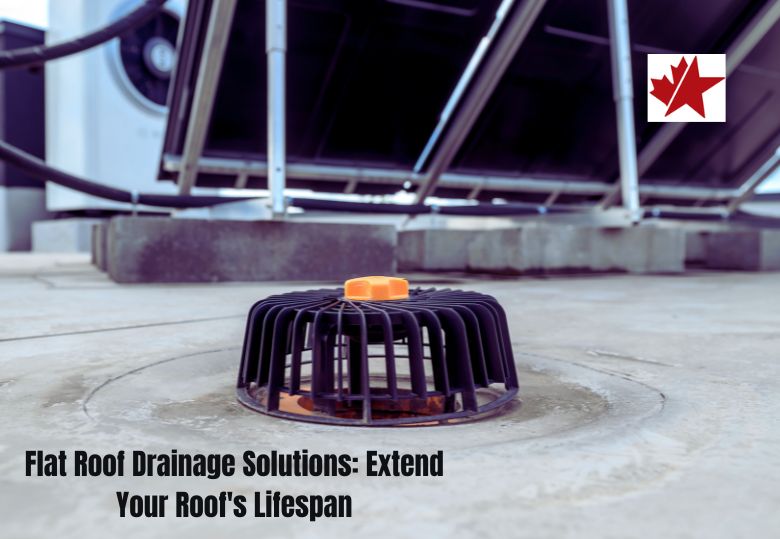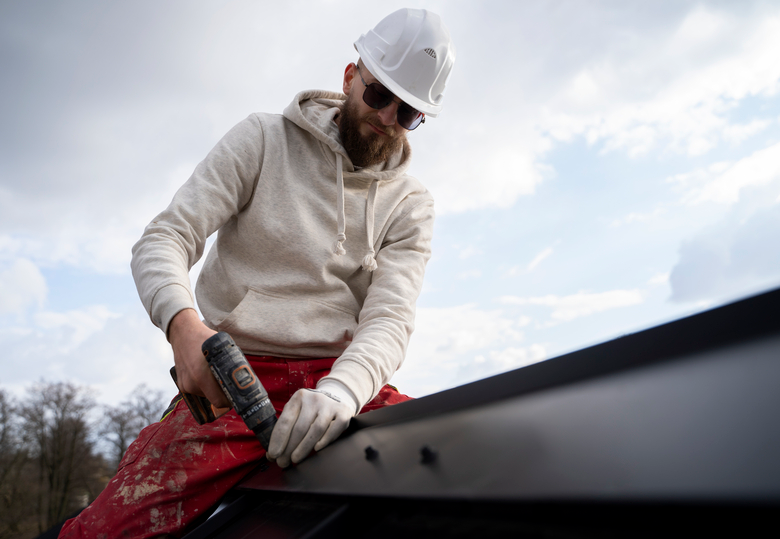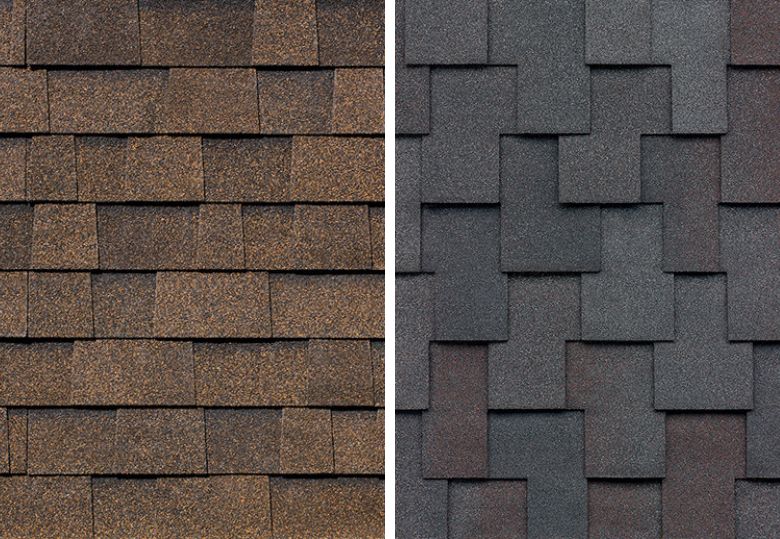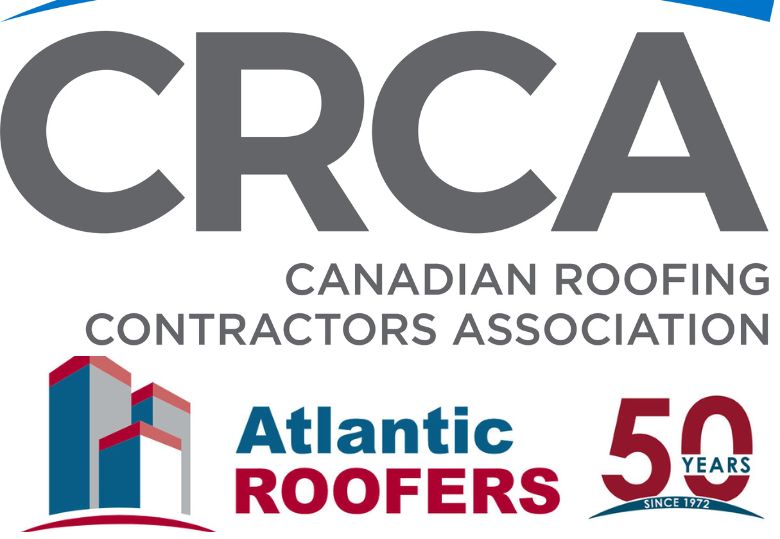With careful engineering, the right materials, and proper drainage, flat roofs are actually very popular in areas with high snow and precipitation accumulation. That means that flat roofing is quite popular in areas like Calgary, Alberta, or areas with similar climates.
Due to Calgary’s high elevation and proximity to the Rocky Mountains, the weather conditions can vary greatly throughout the year. Most of the time, you can get some cold weather, snowfall, wind, and hailstorms. However, the summers in Calgary can be short but hot, and the UV rays from the sun can be particularly harsh during times of clear skies.
Luckily, many flat roofing materials are pretty adaptable to most weather conditions, and they tend to be durable enough to withstand harsh environments. It is very important you choose the materials that work best for your home’s needs. Therefore, when chosen well, flat roofing is a great option if you are a homeowner in Calgary, Alberta.
2. Why Flat Roofs Are Popular in Calgary
Most modern aesthetic designs prefer the clean lines and contemporary style of flat roofs. That has increased their popularity over the years in most urban settings. Calgary is no different and has seen an increase in flat roofing architecture.
Why? Known for their snow management, properly designed flat roofs can actually help homeowners remove snow more easily and reduce the risk of structural damage. They also provide easy access to maintenance, repairs, and the installation of equipment such as HVAC units, solar panels, and satellite dishes, which are very popular in today’s sustainable, green movements.
Furthermore, many Calgary residents can use their flat roofs as an outdoor space, such as a rooftop garden or patio. Especially in city environments, where space is limited, flat roofs are a great functional space to maximize the use of your square footage.
3. Key Factors to Consider
Weather Resistance:
No matter what kind of roof style you use for your home, proper drainage and waterproofing membranes are crucial for helping you combat a lot of snow, rain, hail, and sleet. Depending on who you get to install your roof, flat roofs can be used to better insulate, waterproof, and protect against snow melt and ice dam formation.
While many people suspect that flat roofs accumulate more snow than sloped roofs, it is a lot easier to shovel snow off of a flat roof than it is off of a sloped roof. Not to mention, if properly installed, a flat roof may be able to drain and reduce snow accumulation all on its own.
That being said, BUR roofing materials are best for waterproofing, while metal roofs make it easier to slide snow right off of them. PVC and TPO roofing helps keep you cold during summer, while EPDM will keep you warm due to its black and white colors.
Depending on what your home experiences throughout a harsh weather season, your needs for roofing materials will change, so make sure you take all factors into account before buying.
Durability:
Most of the roofing materials on our list have a general lifespan between 25 to 30 years. That means most homeowners will only need to buy a new roof once, provided that no damage or wear and tear comes to it.
That being said, metal roofing can last over 40 years, depending on the type of metal roof that you buy. Ultimately, roofing material lifespans can be shortened or lengthened depending on how they are installed, how they are water or heat-proofed, and how they are maintained.
Maintenance:
While EPDM and metal roofing materials are relatively low-maintenance, other materials like SBS or BUR roofing can require moderate maintenance over their lifespans. However, this is ultimately dependent upon what damages or issues occur with your Roofing materials.
For example, EPDM roofing is highly susceptible to sharp objects because of its rubber material. On the other hand, metal roofing is easily dented if you invest in aluminum or copper.
The seams can start to come apart on any roofing material if water gets inside, which can be a result of poor installation or harsh weather conditions. In Calgary, Alberta, harsh weather conditions can happen throughout the year, so depending on what your home has to deal with, the easy or difficult levels of maintenance are not guaranteed by the material alone.
Cost:
Depending on where you source your roof from and who you hire to install it, the costs are going to vary depending on where you live. In Calgary, like many areas of the world, the costs are relatively the same depending on supply and demand. But which is more expensive?
Well, metal roofing can be the most expensive, especially if you choose aluminum over steel. SBS roofing is pretty mid-range and more affordable, and many people can install it themselves over smaller areas of square footage – such as on a mobile home or trailer. BUR roofing has a lot of layers due to the nature of its installation, and those layers (especially the bitumen ones) can add up. EPDM is generally the most cost-effective with an easier installation process, but it is a dime a dozen and won’t exactly give your home that luxurious feel you might be looking for.
It’s impossible to give an accurate range of cost because every builder will have different totals due to the labor, time, skills, and installation that it will take to build your roof. Not to mention that the supply and demand of materials is ever-changing.
However, most metal roofs are on the higher end of $8-$16 per square foot, while EPDM is going to be on the lower end of $4-$6 per square foot. The rest fall somewhere between $4-$10 per square foot, depending on the variations of materials or labor required to install them.
Aesthetics:
Depending on the look and feel that you want your home to have when you apply flat roofing materials, the aesthetic is going to vary.
For example, a beautiful copper roof might look more luxurious, while a basic black EPDM Rubber roof is going to look plain. However, depending on your needs, your aesthetic requirements will vary.
If you just need a quick roof over your shed, there is no need to go all out with a colorful steel roof or shiny, white PVC and TPO materials. But, if you want to spruce up all the roofing on a new home, investing in an SBS roof and modifying the colors or adopting a modern and minimalist metal roof might be more up your alley.
Take care to get several samples or images of the different roofing options your builder offers, and consider how the overall aesthetic of the exterior of your home will look before buying.
4. Top Flat Roof Materials for Calgary
( a few sentences on each, like popular suppliers, and mention the manufacturer warranty(do for the most popular only), the price range for each in Canadian $, their weather durability, and feel free to pick the best.)
Modified Bitumen (SBS):
SBS (or styrene-butadiene-styrene) materials are a self-adhering roofing system. Dynamax, Gaf, and Soprema are popular brand names for SBS roofing. In general, SBS roofing costs somewhere within the $4-$10 range per square foot.
Lasting roughly 25-30 years, SBS roofs are made of asphalt and synthetic rubber, which are rolled over the surface of a preexisting roof that is primed beforehand. You can also apply SBS with cold and heat application or mechanically fasten it down yourself.
Considered just as durable and long-lasting as other roofing materials, but with the added convenience of being able to roll it out yourself, SPS Roofing is a popular option for DIY homeowners.
Some SBS roofing products can be reflective and energy efficient to help keep the sun’s heat away during long summers. However, for Calgary homeowners who deal with the cold and wet, SBS roofing is also considered a great waterproof option that is durable and long-lasting, even in harsh conditions.
Just make sure you are keeping an eye on the quality of your roof as the years go on and catch any cracks or issues before they get worse.
EPDM (Rubber Roofing):
Commonly used in commercial projects but recently becoming popular in residential homes, EPDM, or ethylene propylene diene terpolymer, is a synthetic rubber roofing membrane. Common brands for EPDM include Dutral®, Nordel®, and Vistalon®. The cheapest material on this list, you can generally find EPDM roofing for $4-$8 per square foot.
EPDM is generally black in color, meaning it absorbs more heat than most roofing materials and, therefore, can make the room that you use it on warmer. That’s why many homeowners prefer to use it over porches or utility rooms.
However, its coloring means it won’t show as much damage or wear over time, as blemishes, stains, or even cracks can blend into the dark background. So, while your roof may look nice longer, you should keep an eye on it to ensure it is in good condition.
EPDM is also considered highly durable and impact-resistant. That makes this material a good option for high-impact weather, such as with winds, hail, or ice. The material is also good in cold temperatures, often being able to remain pliable and flexible without cracking. So, if you live in Calgary and experience quite a bit of cold weather or high winds and precipitation, EPDM should keep you warm and safe.
Like most roofing materials, EPDM has an average lifespan of somewhere around 25-30 years, so your investment should last as long as you have your home and should only need to be replaced once or twice after that 30-year mark.
TPO & PVC Roofing:
Contrasting the EPDM roofing material, TPO and PVC roofing are white in color and, therefore, better placed above heated areas in your home. This material won’t overheat your rooms and instead will help keep you cool. Some recognizable brands for TPO and PVC roofing are GAF (TPO) and IB Roof Systems (PVC). Others include Johns Manville, Firestone, and Versico. The cost per square foot for most of these fall in the $4-$7 range.
While this may not be useful in colder climates, homeowners who experience hot summers will enjoy this feature for climate control in their homes. However, that white color means showing more dirt and stains over time, making your roof look older, cheaper, or in worse condition than it is without cleaning or maintenance.
Still, PVC and TPO roofing materials are a great option for flat roofs where you might not see the top very often.
Also, the lifespan of these roofing materials is pretty on par with EPDM, so expect your TPO or PVC roof to last about 25 years or more.
Metal Roofs:
Rising in popularity, metal roofs are a very pretty addition to any flat roof surface and can give your home an upgraded look. Popular Canadian metal roofing brands and companies include Vicwest, EDCO Products, and McElroy Metal.
As for cost, on the higher end, Aluminum can cost roughly $8-$16 per square foot, and steel only slightly less at $7-$12 per square foot.
Depending on the kind of metal that you want to work with, the cost or weight of metal roofing will change. For example, aluminum roofing is considered the most lightweight and easy to work with but is also more prone to denting. Steel, on the other hand, is the least expensive option for metal roofing and is considered strong and durable as a residential option.
Unlike the other materials on this list, certain kinds of metal roofing can have a lifespan of 40 years, making it a good one-time investment for lifelong homeowners. However, that upfront cost can be high. But, if you can invest in a metal roof, you’ll find that they are great for areas with extreme temperatures, such as cold.
Snow will pile high onto any flat roof you choose, so it’s important to use a sturdy material – such as steel – to prevent a collapse from all the accumulated weight. If you plan to use your flat roof as added square footage to your home, metal roofs are great for balconies and rooftop gardens. However, precautions should be taken with any roofing material to prevent damage or wear if you plan to walk all over it.
One last thing to be aware of with metal roofs is that they can be extremely loud during times of hard precipitation, such as hail, sleet, or rain. And, if you end up using aluminum or copper for your metal roof, hail or heavy objects can cause denting on those softer metals.
Built-Up Roofs (BUR):
BUR or Built-Up Roofs are sometimes referred to as tar and gravel roofing and are used predominantly on commercial buildings. However, if you were so inclined, you could use one on your residential property. Once again, Soprema is a popular brand of BUR materials, as well as IKO Industries and Siplast. As for cost, BUR materials cost somewhere between $4-$10 per square foot.
BUR roofs are built in several layers, hence the term “built-up.” This generally involves a base layer made of materials to provide thermal insulation and to create a flat and even surface.
After that comes a felt waterproofing layer, which includes a fabric-like material that can be saturated with asphalt or bitumen. Next, you would lay down a thicker layer of bitumen to act as an adhesive, holding the roof together.
Finally, you would top off this BUR roof with a protective material, such as gravel, slag, or a reflective coating. The final layer protects your home from the UV rays of the Sun and can provide additional waterproofing and durability at the end.
Many have claimed that BUR roofing is long-lasting and fire-resistant, and it can withstand foot traffic and other forms of wear or damage. However, this roofing system is obviously quite heavy due to the multiple layers, and the installation process can be quite costly.
While this type of roof is available, many other roofing materials have been considered more efficient, lightweight, and easy to install.
5. Case Studies:
Todd Torrens, from Crescent Point Energy an oil & gas company in Calgary, shares real life experience on how flat roofing is a safe and long-term option when done right. Check out the video below:
6. Making the Right Choice: Tips for Homeowners and Businesses
When shopping around for the right roofing professionals, you want to make sure that you’re focusing on a few key features:
- Experience
- References
- Local finished projects
- Warranties
- Communication
- Detailed estimates
Finding a reliable and safe roofer with great experience and references can seem daunting. Many Builders can feel like used car salesmen, and you’ll want to be careful who you trust.
However, you can usually trust a local business with a strong reputation and stellar references because you can actually see in real time what kind of roofing a company has done in the past. This will help you set up your expectations for your own project and get an idea of the quality of their work.
Another good way to shop around is to get a few detailed estimates and test the communication between you and several roofers. For example, by comparing the prices of different estimates and doing your own research on current materials and their costs, you can get an idea of who is being more accurate and truthful about how much your roof will cost.
You can also get an idea of how quickly each roofer will get back to you with communication and whether or not they seem excited about your project.
Finally, don’t be afraid to ask about their warranties, guarantees, and any deals that they might be currently having. Knowing what to expect after the roofing project is done in the event something goes wrong is crucial for making sure you get your money’s worth.
7. Conclusion
Depending on your home’s needs, making the right choice for your roof ultimately comes down to several factors:
- Weather needs
- Heating and cooling needs
- Cost or budget
- Reliability of roofer installation
- Aesthetics
If you are unsure about what your home needs, consider consulting with a roofer to get an idea of where you should be spending your money. While you may not need a pretty roof, your home may need better insulation and protection from the elements.
No matter what you decide, as long as you take the time to carefully consider all the options, you should end up with a great roof.
